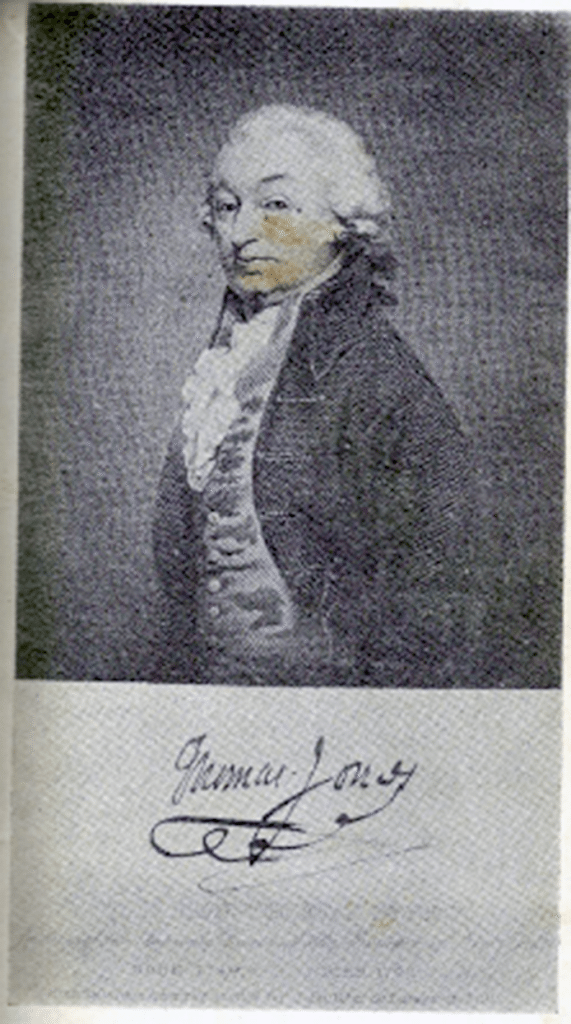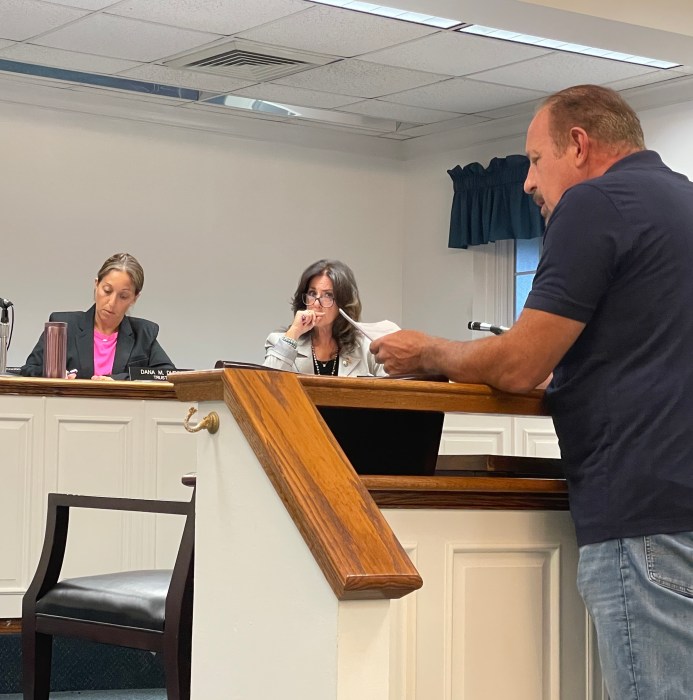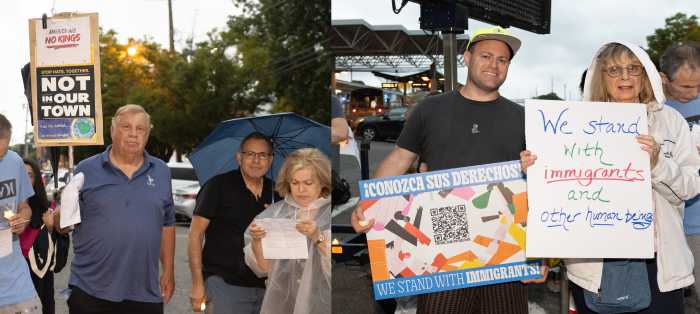Readers familiar with Massapequa’s history have no doubt encountered the names Jones and Floyd-Jones. Family members with these surnames exercised enormous influence over Massapequa’s history. But what is the difference between the two? Which came first, and how did the hyphenated Floyd-Jones name come into existence?

Thomas Jones was the first white settler to the area, called South Oyster Bay at the time he received it, as a 6,000 acre wedding gift in 1696. He had eight children and they had children, all with the last name Jones. So far the story is straightforward, but starting around 1800, the name Floyd-Jones appears in histories of the area and becomes more common than Jones by the 20th century. The reason for this complexity lies in the American Revolution, which forced members of the thirteen colonies to choose sides, with significant consequences. An added complexity is that there are two Thomas Joneses involved in this story.
The younger Thomas Jones was the son of David Jones and therefore, the grandson of the original Thomas Jones. He was educated at Yale, graduating in the class of 1750 as a lawyer, and eventually became a Supreme Court Judge in the British colonial government. He was well-known in the New York colony because of his position and also for his ownership of Tryon Hall, a sumptuous mansion built on Merrick Road by his father in 1770 and named after Governor William Tryon. He became its owner upon his father’s death in 1775 and thus was even more closely identified with the British cause as a Loyalist (or Royalist, or Tory—the names are used interchangeably). He suffered for his allegiance when the New York Legislature, formed at the beginning of the Revolution as a body independent of the British Crown, passed an Act of Attainder on Oct. 23, 1779, identifying 59 New Yorkers as enemies of the revolution because of their Loyalist sympathies. The Act deprived these individuals of the right to remain in the colonies by declaring them to be felons.
They were “…attainted, their estates, real and personal, forfeited, and themselves proscribed, and each and every one of them who shall, at any time hereafter be found in any part of this State, shall be and are declared guilty of felony, and shall suffer death as in causes of felony without benefit of clergy.”
Attainder was an English process that deprived a person of civil rights because of treason. Jones was declared guilty and was forced to sail to England. He and his wife left New York in June 1781 and settled in Hoddesdon, Herefordshire, where he died and was buried in 1792. His father had provided in his will that he would succeed to his estate, as would his children. Thomas was childless, however, so the estate was willed to David Richard Floyd, the oldest son of his sister Arabella, who had married Richard Floyd in 1757. David Jones’ will specified that Richard Floyd would have to add Jones to his name in order to inherit his property, and he agreed to do that. Richard Floyd, however, was also a Loyalist and was forced to leave New York, settling in Nova Scotia and dying there in 1791. His son, David Richard, gained control of the estate in 1782, when he turned 18. A 1788 law granted legal status to the name Floyd-Jones and a 1790 law confirmed David Richard’s possession of his great grandfather’s estate. He thus became the first “official” Floyd-Jones.
David Richard Floyd-Jones and his descendants remained in South Oyster Bay and owned most of the area through the 19th century. Some members of the family, who retained the name Jones, also owned property there, but the majority moved north to the Cold Spring Harbor area. Several were buried in the West Neck Cemetery on Merrick Road, while many others were interred in a plot purchased in the early 1800s at St. John’s Cemetery in Laurel Hollow. Several statues, memorials and stained glass windows were erected to honor them and are available for viewing in St. John’s Church, Cold Spring Harbor, which was built by the Jones family in 1837.
The Floyd-Jones Cemetery was laid out in 1892 behind Old Grace Church on Merrick Road. It contains the remains of Floyd-Jones family members as well as, the first Thomas Jones, his wife Freelove and his son, David.


































